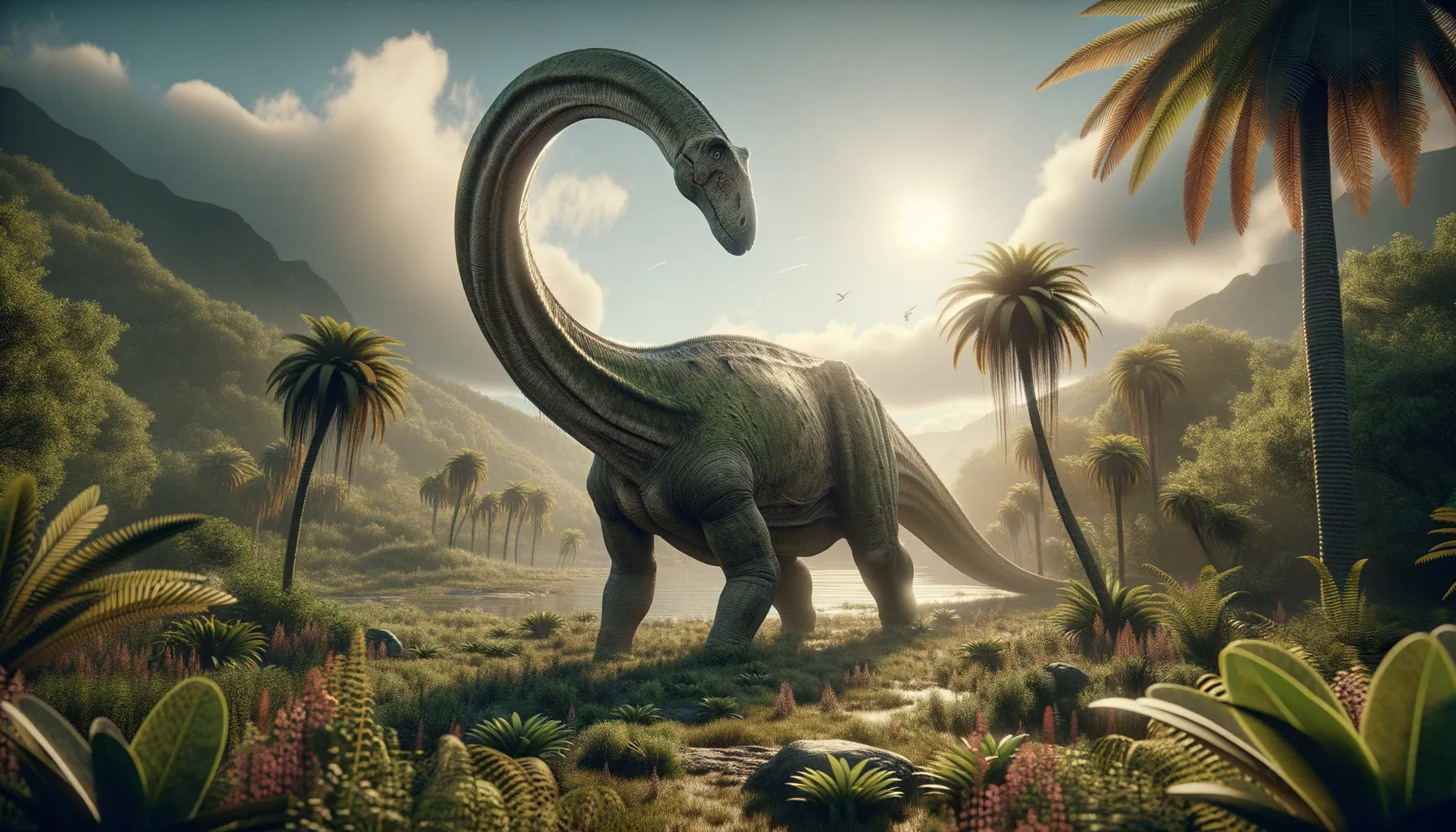
Oceanotitan
Ancient giant of the Jurassic seas!
Period
Jurassic
Length
Measured about 20 to 30 meters in length.
Height
Approximately 10 to 12 feet tall at the hip.
Weight
Estimated to weigh around 10 to 15 tonnes.
Oceanotitan was a massive, long-necked dinosaur from the late Jurassic period. It lived in what is now Portugal and was one of the larger sauropods of its time. This dinosaur had a plant-based diet and roamed the ancient landscapes in search of vegetation. Known for its impressive size, Oceanotitan contributes valuable information to our understanding of dinosaur distribution across prehistoric continents.
Diet
Oceanotitan was an herbivore, primarily feeding on large quantities of vegetation. It consumed ferns, cycads, and conifers, utilizing its long neck to reach leaves in taller trees.
Hunting
Being a herbivore, Oceanotitan did not hunt other animals. Instead, it spent much of its time foraging for food in the dense vegetation of its habitat.
Environmental challenges
Oceanotitan lived in a dynamic environment that presented challenges such as seasonal fluctuations, forest fires, and potential droughts. Its size gave it an advantage in surviving these challenges, allowing it to access more diverse food sources across wide areas. Predation from large theropods might have been a threat, particularly to juvenile Oceanotitans.
Speed
Oceanotitan likely moved slowly due to its massive size.
Lifespan
Estimated to have lived for several decades.
First discovery
Discovered in Portugal in 2019.
Fun Facts
- Oceanotitan was a massive sauropod dinosaur that lived during the Late Jurassic period.
- Its name, Oceanotitan, means 'ocean giant,' hinting at its large size and the region where its fossils were found, near Portugal's coastline.
- This dinosaur is estimated to have been about 12 meters long, making it one of the larger dinosaurs of its time.
- Oceanotitan's fossils were discovered relatively recently, adding new information to the diversity of European dinosaurs.
- The discovery of Oceanotitan helps scientists understand more about dinosaur habitats in ancient coastal environments.
- Despite its size, Oceanotitan is believed to have been a herbivore, feeding on the lush vegetation of its time.
Growth and Development
Oceanotitan experienced rapid growth during its early years, likely reaching full adult size in just a few decades. This rapid growth was crucial for survival, allowing it to outgrow potential predators quickly. Like other sauropods, its development involved growing a long neck to facilitate feeding on high vegetation.
Habitat
Oceanotitan inhabited a semi-arid environment with diverse flora, including tall conifers and ferns. Open woodlands and floodplains provided ample food and water resources. These areas also offered protection from predators, especially for the young.
Interaction with other species
Being a large herbivore, Oceanotitan had minimal direct interaction with carnivorous species. However, competition for food with other herbivores was likely. Its size would deter most predators, but smaller carnivores might scavenge its remains.
Natural lifespan
Oceanotitan could naturally live up to 70 to 80 years.
Reproduction
Oceanotitan reproduced by laying eggs in nests built on the ground. These nests were likely hidden in soft soil or sand to protect them from predators. Parental care might have been limited after laying the eggs, similar to other sauropods.
Social behaviour
While definite conclusions are difficult, Oceanotitan may have exhibited some level of social behavior, forming herds for migration and protection. This herding behavior would help safeguard against predators, especially for younger individuals.
Fossil locations
Fossils of Oceanotitan have been primarily found in the Iberian Peninsula, particularly in Portugal. These findings contribute significantly to understanding dinosaur diversity and distribution in Europe during the Jurassic period. The discovery in Portugal showcases the importance of the region as a hotspot for studying prehistoric life.
